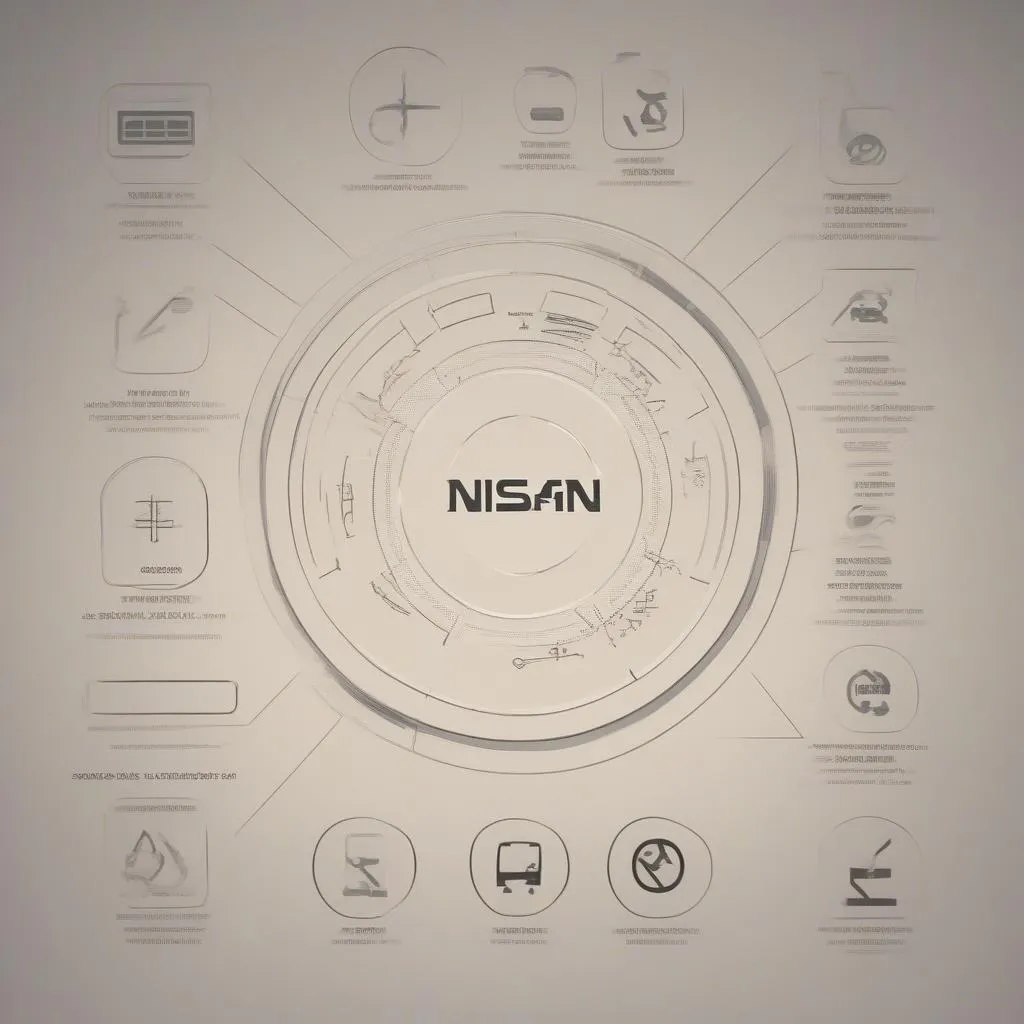Have you ever been driving your Nissan and noticed a strange symbol light up on the dashboard? It can be a little unsettling, especially if you’re not sure what it means. These symbols are designed to warn you of potential issues with your car, but deciphering them can be tricky. Let’s take a look at some of the most common Nissan car dashboard symbols and what they signify.
Understanding Nissan Car Dash Symbols: A Deeper Dive
Nissan, like many other car manufacturers, utilizes a standardized set of symbols to indicate potential problems with your vehicle. These symbols serve as a vital communication system between your car and you, allowing you to quickly identify and address issues. Understanding these symbols is crucial for maintaining your Nissan’s performance and ensuring your safety on the road.
The Importance of Knowing Your Symbols
You’ve just pulled out of the driveway and as you start driving down your street in your Nissan, a symbol that you don’t recognize lights up. What do you do? Do you panic? Do you pull over immediately? You don’t want to ignore a potential problem but you also don’t want to overreact. This is why having a basic understanding of these common symbols is so important. It can help you make informed decisions, such as knowing when to pull over and call your mechanic or when to simply continue driving while keeping an eye on the situation.
Common Nissan Dashboard Symbols and Their Meanings
Understanding these symbols will go a long way in helping you feel more confident while driving your Nissan. Here are some of the most common symbols and their meanings:
-
Engine Malfunction Indicator Light (Check Engine Light): This is probably the most common symbol you’ll encounter. It indicates a potential issue with the engine’s emissions system, fuel system, or other components. While this light can be caused by something simple like a loose gas cap, it can also signal a more serious problem. It’s always best to have a mechanic diagnose the issue as soon as possible.
-
Anti-Lock Braking System (ABS) Warning Light: This light indicates a malfunction in your anti-lock braking system. This system helps prevent your wheels from locking up during braking. If this light is on, it’s best to avoid hard braking and have your ABS system checked.
-
Tire Pressure Monitoring System (TPMS) Warning Light: This light is often accompanied by a specific tire icon. This light indicates that one or more of your tires has low pressure. It’s important to inflate your tires to the correct pressure to avoid tire damage and improve fuel efficiency.
-
Airbag Warning Light: This light indicates a problem with your airbag system. The airbag system is a vital safety feature in your car, and a malfunctioning airbag can be dangerous. If this light is on, get it checked by a qualified mechanic right away.
-
Battery Warning Light: This light indicates a problem with your car battery, alternator, or electrical system. It could mean that your battery is low, your alternator isn’t charging properly, or there’s a fault in the electrical system.
-
Temperature Warning Light: This light indicates a problem with your car’s engine coolant temperature. If your engine is overheating, this light will come on. Pull over to a safe location and let your car cool down before trying to continue driving.
-
Brake System Warning Light: This light indicates a problem with your brake system, such as low brake fluid or a malfunctioning brake pad. Have your brakes inspected by a mechanic as soon as possible.
-
Traction Control System (TCS) Warning Light: This light indicates a problem with your traction control system, which helps prevent your wheels from spinning on slippery surfaces. If this light is on, you may have reduced traction and should drive carefully.
Interpreting the Symbols
The symbols on your dashboard are a vital communication tool, designed to alert you to potential issues with your vehicle. It’s important to take these symbols seriously and have any problems diagnosed and fixed promptly.
Troubleshooting Your Nissan Dashboard Symbols
If you encounter a dashboard symbol you don’t recognize, it’s always a good idea to consult your owner’s manual. Most manuals will provide a detailed description of each symbol and what it signifies. You can also find valuable information about Nissan car dashboard symbols online. If you’re still unsure, it’s always best to consult with a qualified mechanic.
Nissan Dash Symbols and the Importance of Regular Maintenance
Regularly scheduled maintenance is crucial to avoid many of the problems that can trigger these dashboard symbols. Make sure you’re following your Nissan’s recommended maintenance schedule, as this can save you significant time, money, and hassle in the long run.
Additional Information on Nissan Car Dashboard Symbols
If you have further questions regarding Nissan Car Dash Symbols, you can visit the official Nissan website or contact your local Nissan dealership.
Keep Your Nissan Running Smoothly
Remember, your Nissan car dashboard symbols are designed to help you. Understanding what they mean can help you stay safe and avoid costly repairs in the future. By staying informed and taking prompt action when needed, you can keep your Nissan running smoothly for years to come.
Contact Us
If you need assistance with Nissan car dashboard symbols, or if you’re looking for a reliable source to help diagnose or fix any car problems, feel free to contact us through Whatsapp: +84767531508. Our team of experts is available 24/7 to help you.
Related Articles
For more helpful tips and information on Nissan car maintenance, check out these related articles:
- Nissan Car Sign: [link to https://techcarusa.com/nissan-car-sign/]
- Diagra OBD: [link to https://techcarusa.com/diagra-obd/]
- 2000 Nissan Xterra OBD Location: [link to https://techcarusa.com/2000-nissan-xterra-obd-location/]
- 2006 Nissan Maxima Where to Plug OBD: [link to https://techcarusa.com/2006-nissan-maxima-where-to-plug-obd/]
- 2004 Nissan Frontier XE V6 OBD Wiring Diagram: [link to https://techcarusa.com/2004-nissan-frontier-xe-v6-obd-wiring-diagram/]
 Nissan Car Dash Symbols Explained: A Comprehensive Guide
Nissan Car Dash Symbols Explained: A Comprehensive Guide
 Troubleshooting Nissan Car Dash Symbols: A Practical Guide
Troubleshooting Nissan Car Dash Symbols: A Practical Guide